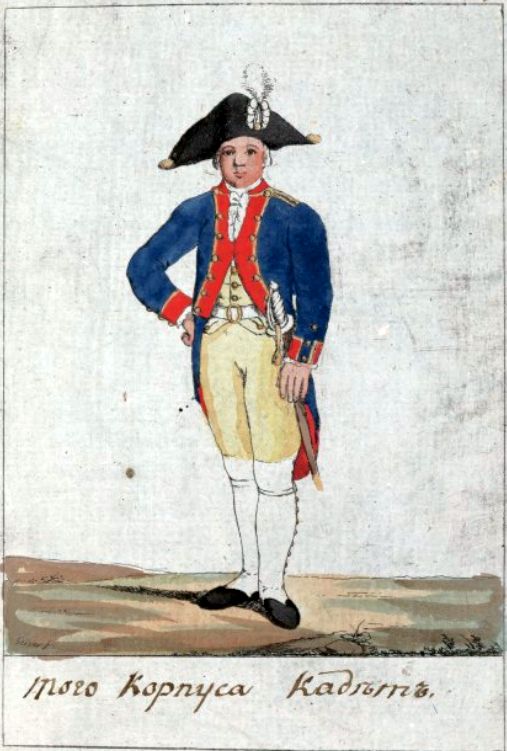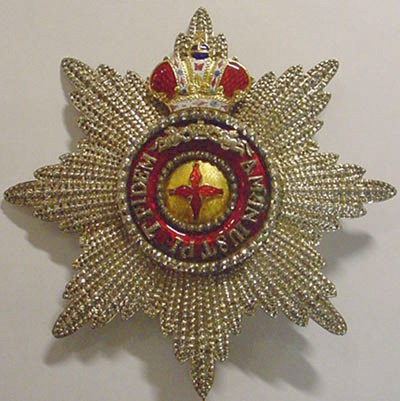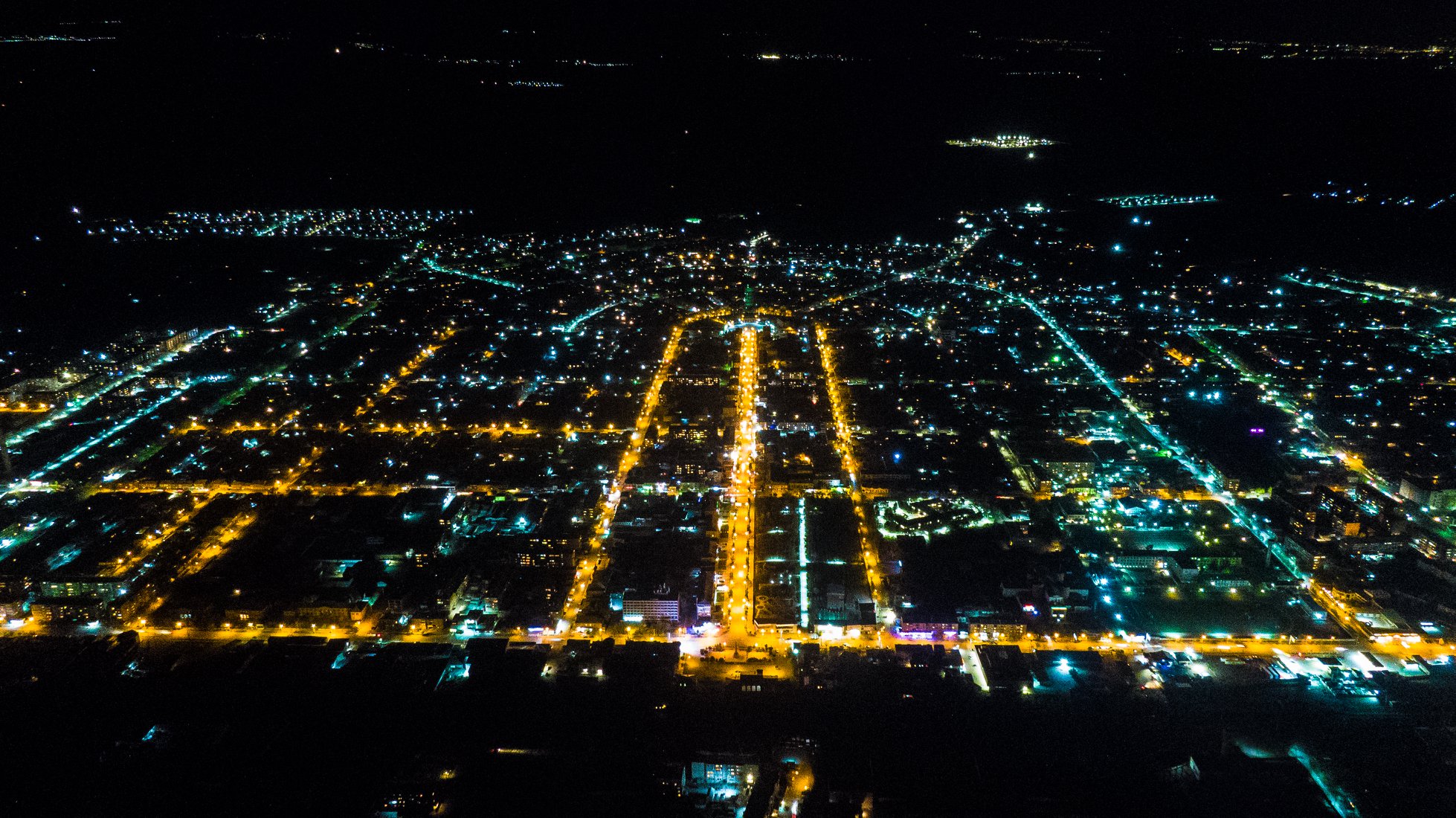|
Ismayil Bek Kutkashensky
Ismayil bek Kutkashensky (, ) was Imperial Russian general of Azerbaijani background. In addition to being author of the first Azerbaijani literary work in French language, he is also known to be first Azerbaijani ever to be decorated with Order of St. George - the highest military decoration of the Russian Empire. Early life He was born on 27 January 1806 during Eid al-Adha for which he was named Ismayil after Ishmael who is believed in Islam to be near-sacrificed by his father Abraham. He was born to Nasrullah Sultan, the last Sultan of Qutqashen and Badirjahan Khanum; had 4 elder brothers named Agha, Huseyn, Abdullah and Yahya. After receiving basic education of Arabic and Persian languages, he was sent to study in First Cadet Corps in St. Petersburg and enrolled in military service in 14th Georgian Grenadier Regiment starting from 1822. On 17 August 1822, Ismail bek was promoted to podpraporshchik, and on 27 August 1824 to praporshchik. Russo-Persian War (1826–1828) He ... [...More Info...] [...Related Items...] OR: [Wikipedia] [Google] [Baidu] |
Qutqashen
Qabala ( az, Qəbələ) is a city and the administrative centre of the Qabala District of Azerbaijan. The municipality consists of the city of Gabala and the village of Küsnat. Before the city was known as Kutkashen, but after the Republic of Azerbaijan's independence the town was renamed in honour of the much older city of Gabala, the former capital of Caucasian Albania, the archaeological site of which is about 20 km southwest. History Antiquity Gabala is the ancient capital of Caucasian Albania. Archaeological evidence indicates that the city functioned as the capital of Caucasian Albania as early as the 4th century BC. Up to the present time, there are the ruins of the ancient city and the main gate of Caucasian Albania. Ongoing excavations near the village Chukhur show that Gabala from the 4th – 3rd centuries BC and up to the 18th century was one of the main cities with developed trade and crafts. The ruins of the ancient town are situated 15 km from the regi ... [...More Info...] [...Related Items...] OR: [Wikipedia] [Google] [Baidu] |
First Cadet Corps
The First Cadet Corps was a military school in Saint Petersburg. History of creation The initiative to create cadet corps for noblemen in Russia belonged to Count Pavel Yaguzhinsky. By the decree of Empress Anna Ioannovna of July 29, 1731, the Senate was ordered to establish a cadet corps. Menshikov Palace on Vasilyevsky Island was transferred to the placement of the school. The opening took place on February 28, 1732: on this day there were 56 cadets. When in June the number of cadets was already 352, they were divided into three companies. The first graduation took place on June 8, 1734: all 11 graduates were promoted to ensigns. The first teachers were accepted without any test; since 1736, the best students began to be involved in teaching. Education system Initially, the corps was conceived for the training of the military, but due to the lack of educational institutions, it began to train civilian officials. This was due to a set of disciplines: simultaneously with the mil ... [...More Info...] [...Related Items...] OR: [Wikipedia] [Google] [Baidu] |
Erzurum
Erzurum (; ) is a city in eastern Anatolia, Turkey. It is the largest city and capital of Erzurum Province and is 1,900 meters (6,233 feet) above sea level. Erzurum had a population of 367,250 in 2010. The city uses the double-headed eagle as its coat-of-arms, a motif that has been a common symbol throughout Anatolia since the Bronze Age. Erzurum has winter sports facilities and hosted the 2011 Winter Universiade. Name and etymology The city was originally known in Armenian as Karno K'aghak' ( hy, Կարնոյ քաղաք), meaning city of Karin, to distinguish it from the district of Karin ( Կարին). It is presumed its name was derived from a local tribe called the Karenitis. Darbinian, M. "Erzurum," Armenian Soviet Encyclopedia. Yerevan: Armenian Academy of Sciences, 1978, vol. 4, p. 93. An alternate theory contends that a local princely family, the Kamsarakans, the Armenian off-shoot of the Iranian Kārin Pahlav family, lent its name to the locale that eventually bec ... [...More Info...] [...Related Items...] OR: [Wikipedia] [Google] [Baidu] |
Order Of Saint Anna
The Imperial Order of Saint Anna (russian: Орден Святой Анны; also "Order of Saint Anne" or "Order of Saint Ann") was a Holstein ducal and then Russian imperial order of chivalry. It was established by Karl Friedrich, Duke of Holstein-Gottorp, on 14 February 1735, in honour of his wife Anna Petrovna, daughter of Peter the Great of Russia. Originally, the Order of Saint Anna was a dynastic order of knighthood; but between 1797 and 1917 it had dual status as a dynastic order and as a state order. The Order of St. Anna continued to be awarded after the revolution by Grand Duke Kirill Vladimirovich, Grand Duke Vladimir Kirillovich, and Grand Duchess Maria Vladimirovna. Today, the Russian Imperial Order of St. Anna, awarded by Grand Duchess Maria Vladimirovna is recognized as an order of chivalry by the privately operated ICOC as a continuation of the pre-Revolutionary order, and has been approved for wear with military uniform by the Russian Federation, but not by s ... [...More Info...] [...Related Items...] OR: [Wikipedia] [Google] [Baidu] |
Capture Of Erivan
The capture of Erivan ( fa, فتح ایروان, translit=Fath e Iravān; russian: Взятие Эривани, translit=Vzyatie Ėrivani) took place on 1 October 1827, during the Russo-Persian War of 1826–28. The city fell to the Russians after being besieged for a week and opened up the path for the eventual capture of Tabriz, the second largest city in Iran and an important trading post. Background Siege of Yerevan When word reached Paskevich he abandoned any plans to move south and returned to Echmiadzin (5 September). Moving east he captured the fort of Serdar-Abad from the Persians and on 23 September appeared before the walls of Yerevan. Much of the siege work was directed by Pushchin u a former engineer officer who had been reduced to the ranks for involvement with the Decembrists. When the place fell he was promoted to non-commissioned officer. Yerevan fell on 14 October. 4000 prisoners and 49 guns were taken and the Yerevan Khanate became a Russian province. Aft ... [...More Info...] [...Related Items...] OR: [Wikipedia] [Google] [Baidu] |
Armavir, Armenia
Armavir ( hy, Արմավիր), is a town and urban municipal community located in the west of Armenia serving as the administrative centre of Armavir Province. It was founded in 1931 by the government of the Armenian Soviet Socialist Republic. As of the 2011 census, the population of the town is 29,319, declined from 46,900 reported at the 1989 census. Currently, the town has a population of 37,053 as per the 2019 official estimate. The town was known as Sardarabad before 1935, and Hoktemberyan from 1935 to 1995. Currently, Armavir is the seat of the Diocese of Armavir of the Armenian Apostolic Church. Etymology Founded in 1931 as Sardarabad, the town was known as Hoktemberyan (meaning the ''city of October'') between 1935 and 1995, named in honor of the October Revolution. In 1992, the town was named Armavir by the government of independent Armenia, after the nearby ancient city of Armavir, that was founded in the 8th century BC by King Argishti I of Urartu, and became the ... [...More Info...] [...Related Items...] OR: [Wikipedia] [Google] [Baidu] |
Abbasabad (fortress)
Abbasabad was a fortress of strategic importance for the defense of the Nakhichevan Khanate. It was built with the help of French engineers by Abbas Mirza in 1810. He appointed Ehsan Khan Kangarlu as commander of the fortress in 1827, during the Russo-Persian War of 1826–1828. During a siege by the Russians, Ehsan Khan secretly arranged for the gates of the fortress to be opened to the Russian commander General Ivan Paskevich Count Ivan Fyodorovich Paskevich-Erevansky, Serene Prince of Warsaw (russian: Ива́н Фёдорович Паске́вич-Эриванский, светлейший князь Варшавский, tr. ; – ) was an Imperial Russian mi ... on 22 July 1827. During the Russian rule the fortress was abandoned and fell into ruin. The ruins remained until 1970s, when they were buried under the water during construction of the Aras water reservoir. References External links No. 6497 Agreement concerning the settlement of frontier and finan ... [...More Info...] [...Related Items...] OR: [Wikipedia] [Google] [Baidu] |
Podporuchik
''Podporuchik'' ( sh-Cyrl-Latn, потпоручник, potporučnik, cs, podporučík, pl, podporucznik, russian: подпору́чик, bg, подпоручик, sk, podporučík) is the most Junior officer in some Slavic armed forces, and is placed below the rank of Lieutenant, typically corresponding to rank of second lieutenant in anglophone countries. Russia and Russian imperial armed forces The rank was introduced first by Peter the Great in 1703 as an officer rank of the so-called ober-officer rank group. It belonged to rank class XIII (infantry), class XII (artillery, and engineer troops), and class X (guards) until 1884. In line with the military reforms in 1884, became in peace time. However, in the guards and the cossacks armed forces Cornet and Chorąży remained the lowest officer rank. The equivalent to was Michman in the Imperial Russian Navy, and governmental secretary (russian: губернский секретарь, gubernsky sekretar) in the civil a ... [...More Info...] [...Related Items...] OR: [Wikipedia] [Google] [Baidu] |
Battle Of Ganja (1826)
The Battle of Ganja or Elisavetpol (also Elizabethpol, Yelisavetpol, &c.) took place on 26 September 1826, during the Russo-Persian War of 1826-1828. Crown prince and commander-in-chief Abbas Mirza had launched a successful campaign in the summer of 1826, which resulted in the recapture of many of the territories that were lost to the Russians by virtue of the Treaty of Gulistan (1813). Noticing the approach of the Iranian army, many of the locals that had recently come under formal Russian jurisdiction, quickly switched sides. Amongst the swiftly recaptured territories by the Iranians were the important cities of Baku, Lankaran and Quba. Then Russian commander-in-chief in the Caucasus, Aleksey Yermolov, convinced that he had insufficient resources to battle the Iranians, ordered for the withdrawal from Elisavetpol (Ganja), which was thus retaken as well. Yermolov's replacement, Ivan Paskevich, now with additional resources, started the counteroffensive. At Ganja, in late Septe ... [...More Info...] [...Related Items...] OR: [Wikipedia] [Google] [Baidu] |
Şəmkir
Shamkir ( az, Şəmkir), known historically as Annenfeld, is a city in and the capital of Shamkir District in western Azerbaijan, located in the northern foothills of the Lesser Caucasus, on the coast of the Chagirchay River on Tbilisi-Yevlakh highway, about from Dallar railway station. It is the eighth largest city in Azerbaijan by population. Etymology One theory is that the name derives from the dialectal Azerbaijani word ''sham'', meaning ''a place covered in green''.Pospelov, pp. 27–28Kotlyakoventry on "Shamkir"/ref> Population As of October 1, 2021, the population of the region was 221372 people. History In antiquity, the territory of the modern Shamkir was part of the province of Utik, a part of the Kingdom of Armenia until 387 AD. Greco-Roman historians from the 2nd century BC to the 4th century AD state that Utik was a province of Armenia, with the Kura River separating Armenia and Caucasian Albania. The historical Shamkur (also known as Shamkhor and Sham ... [...More Info...] [...Related Items...] OR: [Wikipedia] [Google] [Baidu] |
Praporshchik
( rus, Пра́порщик, 3=ˈprapərɕːɪk, ) is a rank used by the Russian Armed Forces and a number of former communist states. The rank is a non-commissioned officer's and is equivalent to in navies. It is usually equivalent to Warrant officer class 1 or Sergeant major in English speaking armies. Within NATO forces, the rank is rated as OR-7 or OR-8. Russia is a rank in the Russian military, also used in other uniformed services of the Russian government such as the police. It was a junior officer rank in Imperial Russia, but was abolished following the Russian Revolution. In 1940, the rank was restored as a separate career group between non-commissioned officers and officers. Imperial Russia was originally an Oberoffizer rank, in line to the Table of Ranks class XII/XIII in the Imperial Russian Army equivalent to of the Imperial Russian Navy and classified as junior officer rank. It was first introduced in Streltsy New Regiments. The name originates from Slav ... [...More Info...] [...Related Items...] OR: [Wikipedia] [Google] [Baidu] |
Podpraporshchik
Podpraporshchik (russian: подпра́порщик, lit=under praporshchik' or 'junior praporshchik, ) was a Russian non-commissioned officer (NCO) rank ( rus, у̀нтер-офице́р ранг, , ˌunʲtʲɪr ɐfʲɪˈtsɛr rank), originally below the Sergeant and Feldwebel. From 1826 to 1884 it became the highest NCO rank of the infantry, cavalry, and Leib Guard. From 1884, ''podpraporshchik'' ranked below the newly introduced NCO-grade zauryad-praporshchik (russian: зауря̀д-пра́порщик, lit=praposhchik deputy, ). Branch of service, rank and rank insignia ;See also: *History of Russian military ranks * Ranks and rank insignia of the Imperial Russian Army until 1917 ;See also: *History of Russian military ranks Modern Russian military ranks trace their roots to the Table of Ranks established by Peter the Great. Most of the rank names were borrowed from existing German/Prussian, French, English, Dutch, and Polish ranks upon the formation of the Rus ... [...More Info...] [...Related Items...] OR: [Wikipedia] [Google] [Baidu] |







